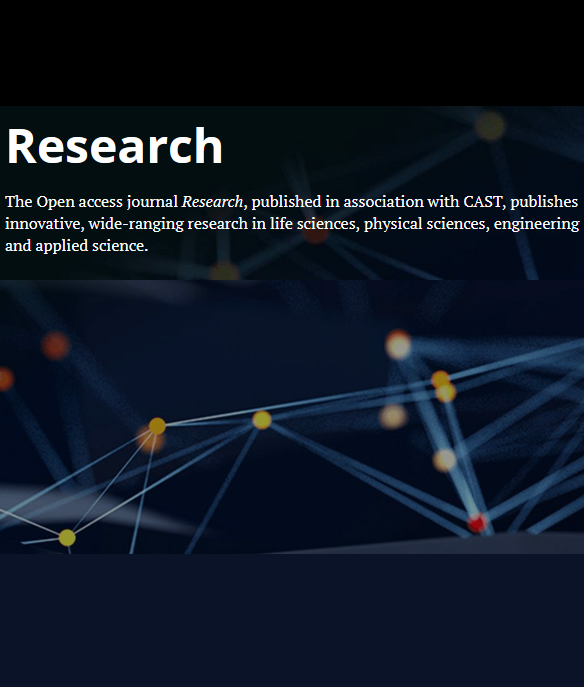中红外线光子通过激活听皮层中的 KCNQ2 通道缓解耳鸣。
IF 11
1区 综合性期刊
Q1 Multidisciplinary
引用次数: 0
摘要
耳鸣是一种幻听,在不同人群中常常伴有听力损失、认知障碍和心理障碍。耳蜗核中的 KCNQ2 和 KCNQ3 通道--电压依赖性钾离子通道--功能障碍可导致耳鸣。尽管 KCNQ2 和 KCNQ3 通道在听觉皮层中的重要性已得到公认,但它们在耳鸣发病机制中的确切关系和影响仍是科学探索的领域。本研究旨在阐明听皮层中的 KCNQ2 和 KCNQ3 通道在耳鸣发生中的病理作用,并研究中红外光子治疗耳鸣的潜力。我们利用噪声诱导耳鸣模型,结合免疫荧光、电生理记录和分子动力学模拟,研究了诱导耳鸣后的形态学和生理学改变。此外,还进行了体内照射,以验证红外光子的治疗效果。耳鸣是通过间隙比值的缺陷与相似的前脉冲抑制比值和听性脑干反应阈值来验证的。我们通过贴片钳记录观察到听皮层神经元兴奋性显著增强,这与 KCNQ2 和 KCNQ3 通道功能障碍有关。经红外光子照射后,兴奋性神经元的发射受到抑制,原因是滤波器区域的结构改变导致 KCNQ2 电流增加。同时,红外光子缓解了耳鸣动物的声学惊吓反应缺陷。此外,红外光子还逆转了耳鸣组兴奋性神经元的异常过度兴奋。这项研究提供了一种利用 KCNQ2 通道通过非热效应调节听皮层神经元兴奋性的新方法。红外光子通过抑制异常的神经兴奋性有效缓解了耳鸣相关行为,为耳鸣治疗的创新疗法奠定了基础。本文章由计算机程序翻译,如有差异,请以英文原文为准。
Mid-Infrared Photons Alleviate Tinnitus by Activating the KCNQ2 Channel in the Auditory Cortex.
Tinnitus is a phantom auditory sensation often accompanied by hearing loss, cognitive impairments, and psychological disturbances in various populations. Dysfunction of KCNQ2 and KCNQ3 channels-voltage-dependent potassium ion channels-in the cochlear nucleus can cause tinnitus. Despite the recognized significance of KCNQ2 and KCNQ3 channels in the auditory cortex, their precise relationship and implications in the pathogenesis of tinnitus remain areas of scientific inquiry. This study aimed to elucidate the pathological roles of KCNQ2 and KCNQ3 channels within the auditory cortex in tinnitus development and examine the therapeutic potential of mid-infrared photons for tinnitus treatment. We utilized a noise-induced tinnitus model combined with immunofluorescence, electrophysiological recording, and molecular dynamic simulation to investigate the morphological and physiological alterations after inducing tinnitus. Moreover, in vivo irradiation was administered to verify the treatment effects of infrared photons. Tinnitus was verified by deficits of the gap ratio with similar prepulse inhibition ratio and auditory brainstem response threshold. We observed an important enhancement in neuronal excitability in the auditory cortex using patch-clamp recordings, which correlated with KCNQ2 and KCNQ3 channel dysfunction. After irradiation with infrared photons, excitatory neuron firing was inhibited owing to increased KCNQ2 current resulting from structural alterations in the filter region. Meanwhile, deficits of the acoustic startle response in tinnitus animals were alleviated by infrared photons. Furthermore, infrared photons reversed the abnormal hyperexcitability of excitatory neurons in the tinnitus group. This study provided a novel method for modulating neuron excitability in the auditory cortex using KCNQ2 channels through a nonthermal effect. Infrared photons effectively mitigated tinnitus-related behaviors by suppressing abnormal neural excitability, potentially laying the groundwork for innovative therapeutic approaches for tinnitus treatment.
求助全文
通过发布文献求助,成功后即可免费获取论文全文。
去求助
来源期刊

Research
Multidisciplinary-Multidisciplinary
CiteScore
13.40
自引率
3.60%
发文量
0
审稿时长
14 weeks
期刊介绍:
Research serves as a global platform for academic exchange, collaboration, and technological advancements. This journal welcomes high-quality research contributions from any domain, with open arms to authors from around the globe.
Comprising fundamental research in the life and physical sciences, Research also highlights significant findings and issues in engineering and applied science. The journal proudly features original research articles, reviews, perspectives, and editorials, fostering a diverse and dynamic scholarly environment.
 求助内容:
求助内容: 应助结果提醒方式:
应助结果提醒方式:


